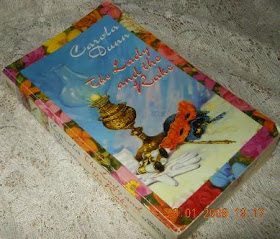 |
| Signing with Peggy Fielding and Warren Bull |
by Jackie King
Most people love
Thanksgiving. You don’t have to buy anyone a gift and sometimes one gets invited a fabulous dinner with family and
friends. Grandchildren and football are an added bonus. And those of us who
live in a free country have much to be thankful for.
These are only a few reasons
why, back in 2009 when asked to pick a holiday for the anthology TWO FOXY
HOLIDAY HENS AND ONE BIG ROOSTER, that I chose Thanksgiving. The other writer’s
choices: Dusty Richards, winner of two Spur Awards, picked Independence Day;
and Peggy Fielding decided on Christmas.
My novella, THANKSGIVING WITH
A MYSTERIOUS STRANGER, is set in 1889 Guthrie, Oklahoma Territory, and features
an evil Rooster named Henry, a mean-spirited mail-order husband who is gunned
down in the first chapter, and, of course, a handsome stranger named Josh
Savage.
After killing her husband, the
villain tries to rape Hannah Smith, and while fighting him off she vows two
things: if she lives, she will prove up her land and she will never marry.
Advice from Nancy Picard
While working on this story I
attended a mystery conference in Manhattan, Kansas, where the above picture was taken. The keynote speaker,
Nancy Picard, said that she liked to start books with food. Being a person who loves
food and drink (especially coffee) I decided to take her advice. This is the
way I began THANKSGIVING WITH A MYSTERIOUS STRANGER:
All Hannah Smith ever wanted was a house with yellow
curtains, a small garden and a good cup of coffee. Right now she’d settle for
the coffee, but she had only enough grounds for one final pot and she was
saving that treat for Thanksgiving Day.
Hannah is ruminating her dilemma
while sitting on a breezy seat in the outhouse of the claim that she and her mail-order
husband George (he punishes her by not buying coffee) have filed. She’s holding
a broom to fight off Henry the rooster, when someone rides onto the property
and shoots George.
And her problems have only
just started.
If you want a good
Thanksgiving read you can download this anthology from Amazon for $2.99. There
is also a hard copy for sale.



































